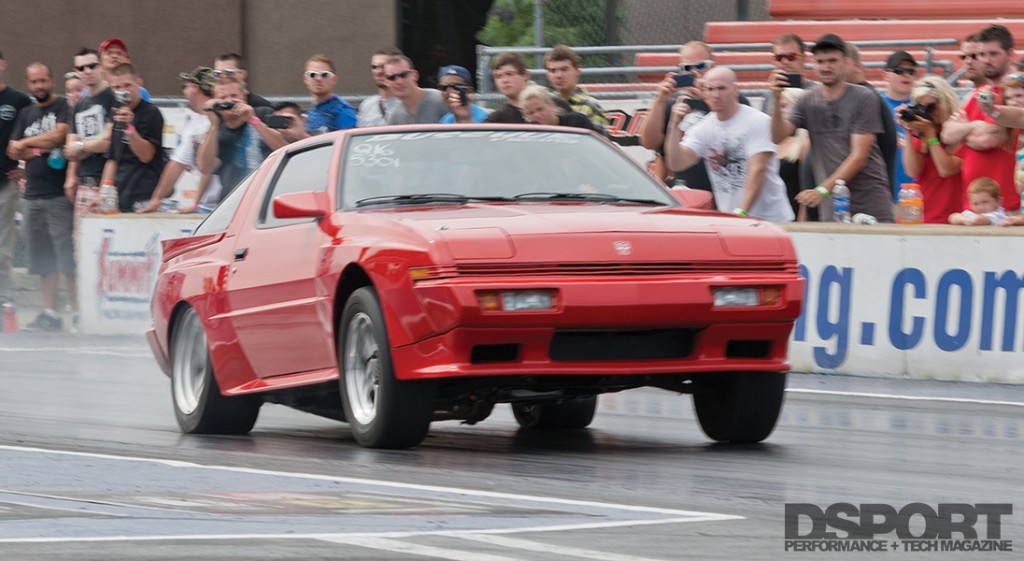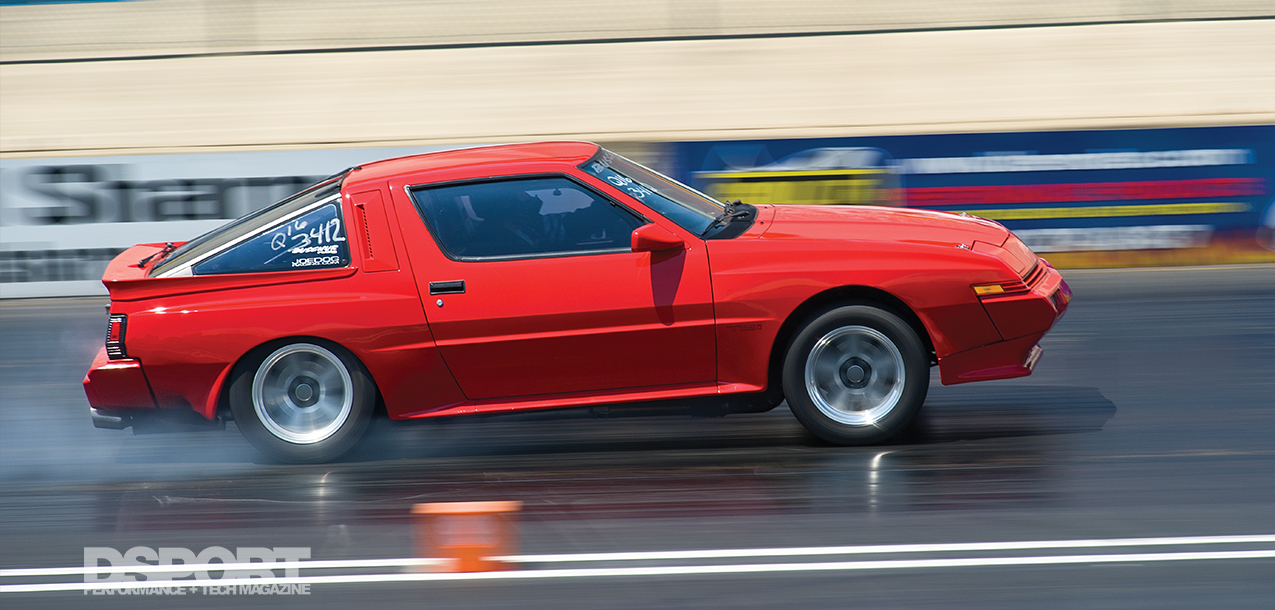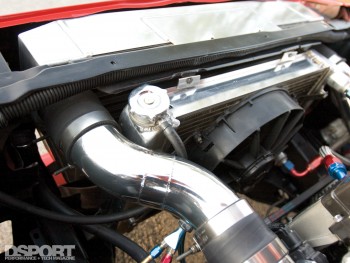Many import performance enthusiasts are familiar with the “DSM”moniker, referring to a joint venture between Mitsubishi Motors of Japan and Chrysler Corporation here in the United States. The performance coupes produced by this venture collectively earned the DSM nickname, derived from the diamond logo of Mitsubishi Motors and the five-point star of Chrysler Corporation. What many enthusiasts don’t realize is that the cooperative relationship extends further back than the official DSMs produced in the late Eighties. In 1983, the platform that some believe was the precursor to the Talons, Eclipses and Lasers was born. It, too, was eventually given a nickname.
Text by Arnold Eugenio // Photos by Michael Ferrara and Richard Fong
Star-Quest
That year, a turbocharged 2-plus-2 sportscar hit the American market under the Mitsubishi Starion and Chrysler/Dodge/Plymouth Conquest badges. The front-engine, rear-wheel drive platform sported some technologically advanced features including an intercooled factory turbocharger and competed for enthusiast attention away from the likes of Nissan’s Z platform, Mazda’s RX-7 and the Toyota Supra. The wedge-shaped chassis and “futuristic” styling eventually caught the eye of a young Joe Gilk, who vowed to eventually own a “Starquest”-platform to satisfy his track performance urges.
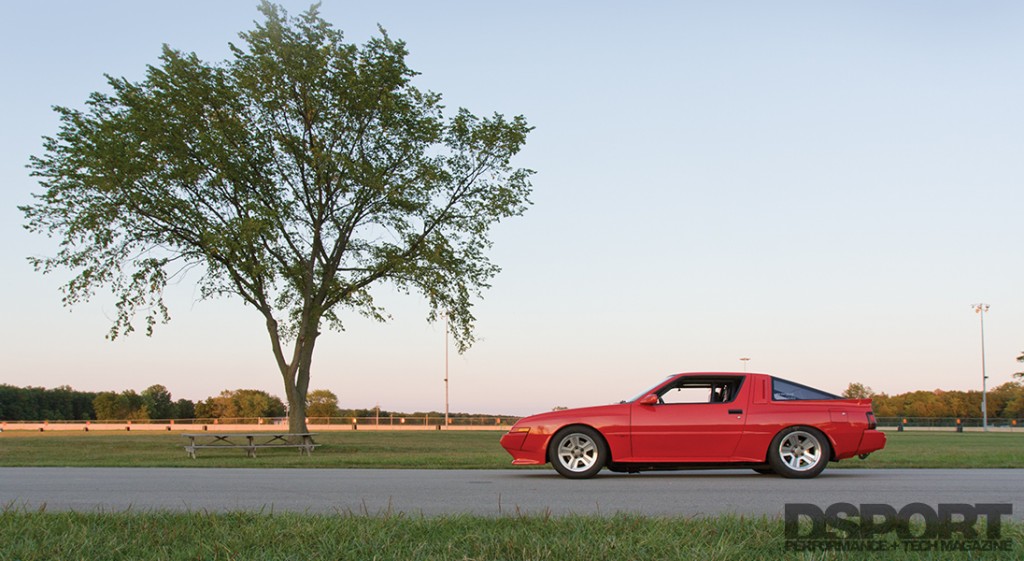
Back to the Future
In the year 2000, Ohio resident Gilk finally acquired the Chrysler-badged Conquest TSI seen here. Gilk took great pains to retain the original visual heritage of the wide-bodied JD chassis. He brought the original paint back to new-car specification and restored a set of OE wheels for track duty. As far as outward appearances, the Conquest looks like a fully-restored stock platform. In the rear view mirror, the only items that might tip you off to the secret nature of the car is the “Transformers Autobots” decal sitting where the Chrysler logo once was and the hood pins indicating that something transformative indeed might be sitting just underneath the hood.
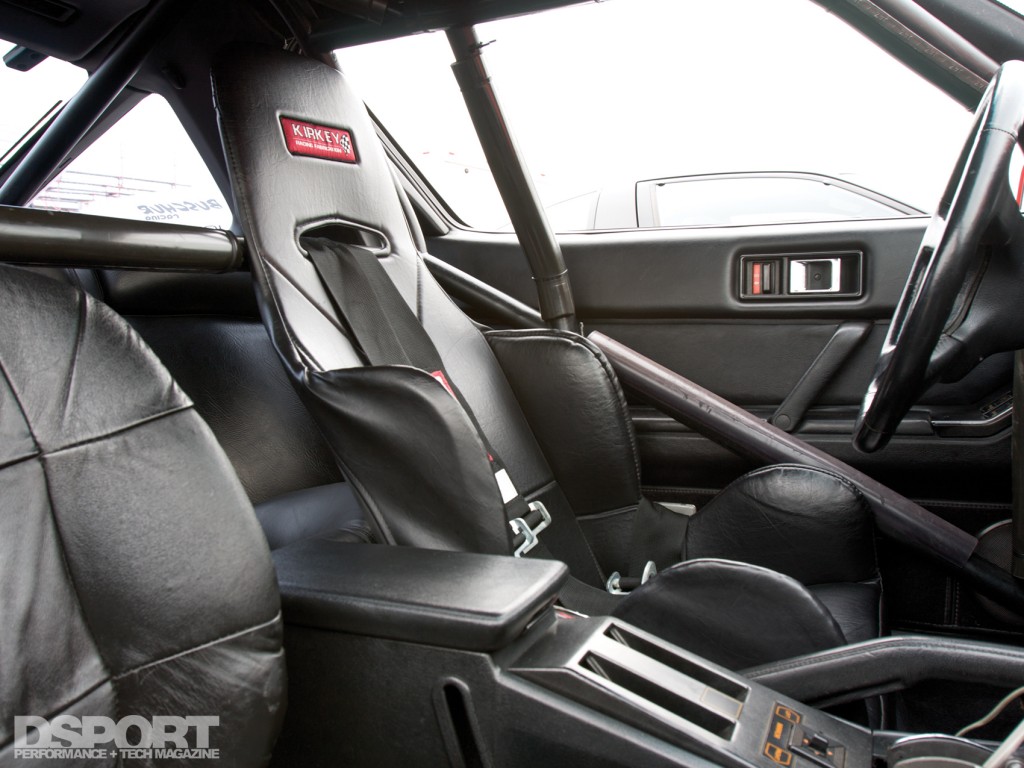
Autobot, Transformed
While the 2.6-liter G54B engine and Mitsubishi TD05-12A turbocharger found in the Starquest platforms were considered high-tech for the time, Gilk chose a more recent, reliable and proven powerplant to motivate his Conquest. This transformation started with a 2.0- liter Mitsubishi 4G63 6-bolt engine subject to a series of serious modifications. Gilk sent the long block to Dave Buschur at Buschur Racing. Buschur separated the head from the block and set out to reinforce each.
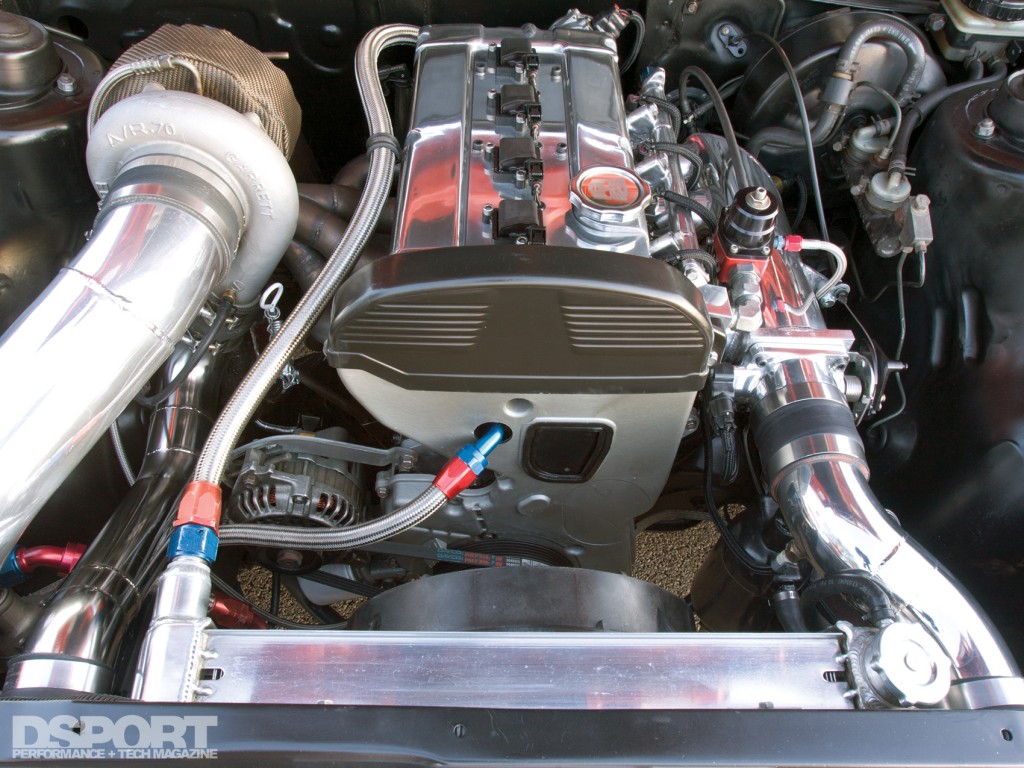
Concrete Evidence
On the bottom end, the 4G63 block was first cleared of its rotating assembly and filled with concrete. This procedure solidifies and strengthens the cylinder bores, allowing them to withstand extremely elevated amounts of power without sacrificing structural integrity. Once complete, Buschur mated the stock crankshaft to a set of Crower connecting rods. These Buschur-spec rods in turn connect to a set of Buschur-spec Wiseco 9.0- to-1 compression ratio half- millimeter oversized pistons. To help reduce parasitic drag from belt- driven accessories, Gilk replaced the factory water pump with a Dedenbear WP3 remote-mounted water pump. This electric pump flows as much as 23 gallons per minute to help maintain low operating temperatures in the concrete-filled engine block.
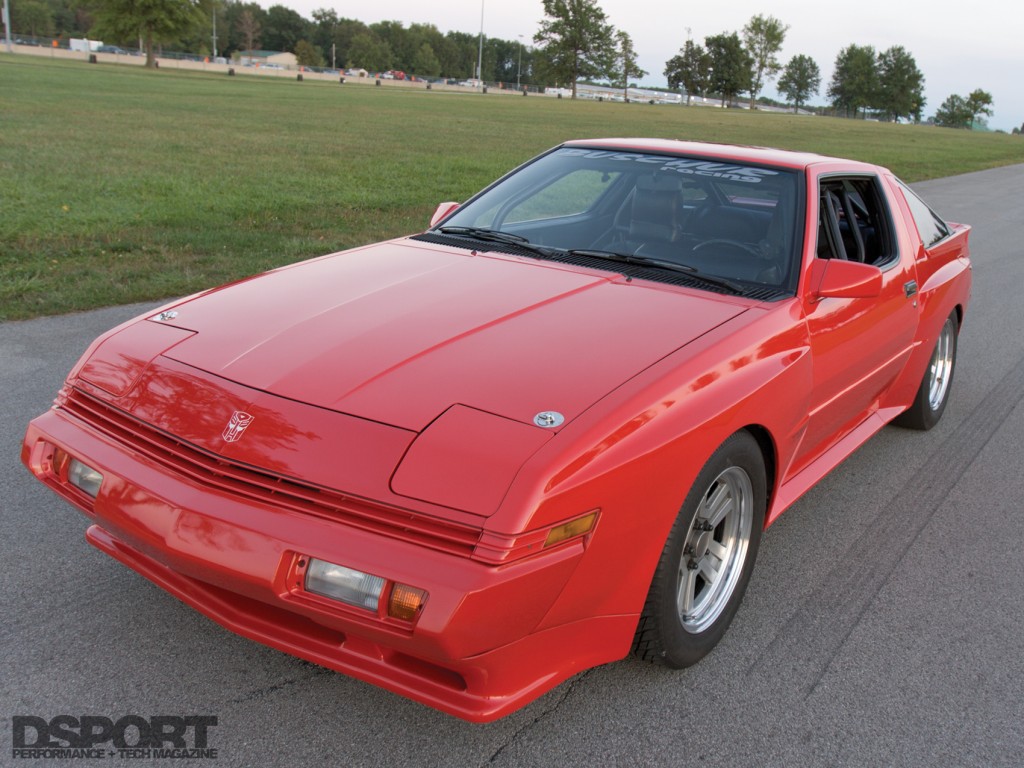
Hardcore Headwork
The cylinder head features more modifications done to Buschur Racing’s specifications, sold under the Buschur Racing Stage 3 cylinder head package. In addition to the refreshed seals, valve guides and other valvetrain components, Buschur Racing ports and polishes the intake and exhaust ports for better flow characteristics. Buschur then installed a set of Supertech oversized valves that further the head’s airflow capability and better withstand the extremely high temperatures seen in the combustion chamber. A set of Supertech valve springs promotes speedy and accurately timed valve return while a set of its retainers assist in keeping the valvetrain in place.
Burning Breaths
The longitudinally-mounted 4G63 engine breathes through a custom Accufab air induction system that feeds the Forced Performance HTA GT3586 turbocharger hanging from the custom Buschur Racing tubular stainless-steel exhaust manifold. The ball-bearing FP turbocharger pushes compressed air first through a Buschur Racing front-mounted intercooler for the requisite charge- air temperature drop before introducing the airflow to a Buschur Racing sheet metal intake. The intake also houses the four Precision Turbo & Engine 1,000cc/min injectors that spray the 4G63’s C16 fuel into the cylinder head where it combusts courtesy of an MSD DIS 2 ignition system firing NGK Iridium spark plugs.
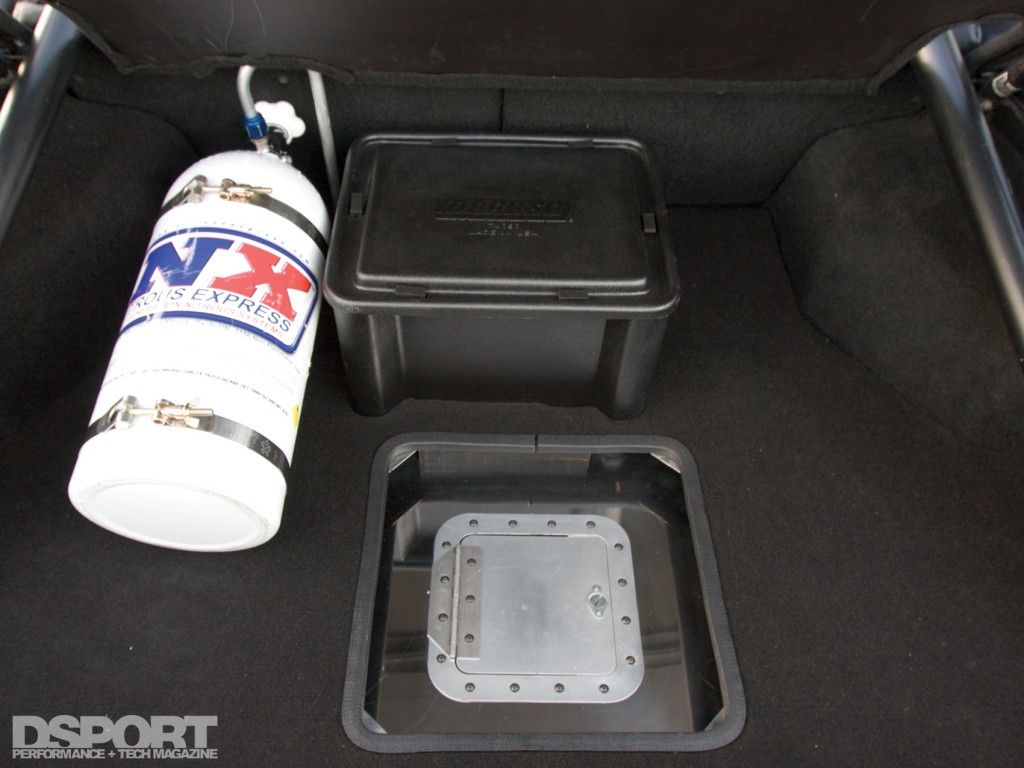
Fantastic Four Hundred
In drag racing, making consistent passes down the 1,320 is as important as producing the power to get you down there quickly. This means getting the torque to motivate the wheels forward instead of spinning in place. Incidentally, the longitudinal mounting of the 4G63 in the Conquest’s engine bay required a longitudinal transmission mount option in lieu of the originally-transverse-mounted 5-speed manual normally mated to the donor engine. To that end, Gilk sourced a GM TH400 automatically- shifted 3-speed transmission combined with a Hurst Quarter Stick shifter to control appropriate gear selection. These transmissions have proven themselves capable of tremendous amounts of torque in a number of domestic platform drag racing applications. To turn the Conquest’s rear wheels, Gilk enlisted the services of The Driveshaft Shop to custom make axles that would fit the revised rear differential. The axles transfer rotational energy to a set of OE 16×8-inch wheels wearing 26 x 10.5-inch Mickey Thompson ET Street drag radials. Directional control is provided in the front with a set of OE 16 x 7-inch alloys dressed in 225/55R16 Nitto NT450 UHP street tires.
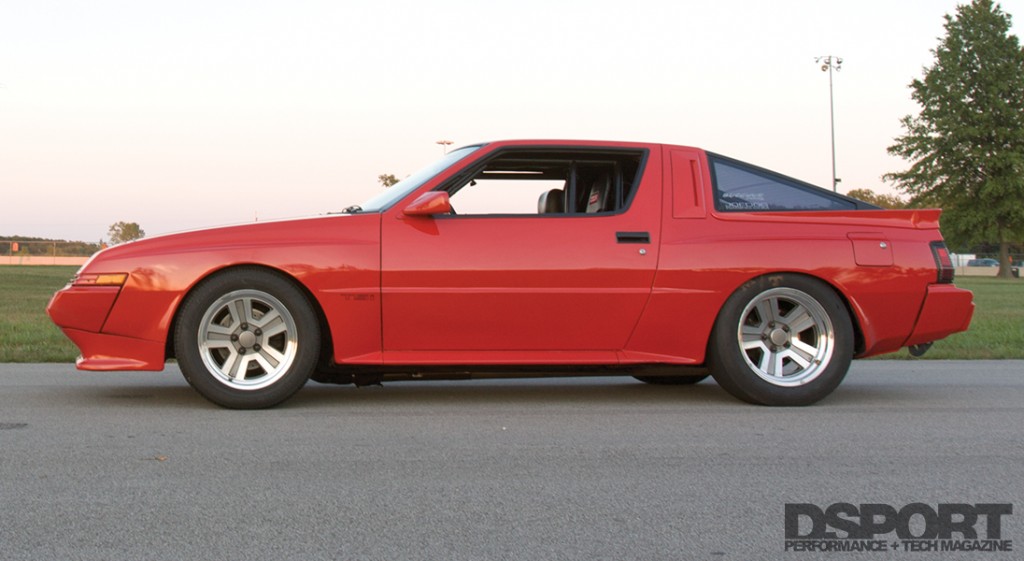
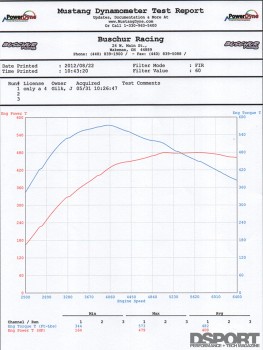 Antithesis of “Dyno Queen”
Antithesis of “Dyno Queen”
With all the necessary hardware in place, Buschur Racing utilized an AEM EMS Series 1 engine management system to orchestrate power production. Under 42psi of boost pressure managed by a Buschur Racing boost controller, the 4G63 engine drives the Conquest’s rear wheels to the tune of 479 peak wheel horsepower at approximately 5,000 rpm. The engine torque generated peaks of 573 lb-ft around 4,000 rpm. Not content to simply exist as a faithful restoration project, Gilk regularly puts the Conquest and the TH400 transmission through its paces as it spends almost as much time on the track as it does on the street. To date, Gilk’s best effort has the Conquest tripping the lights with a 9.641-second elapsed time and a trap speed of 142.79 mph.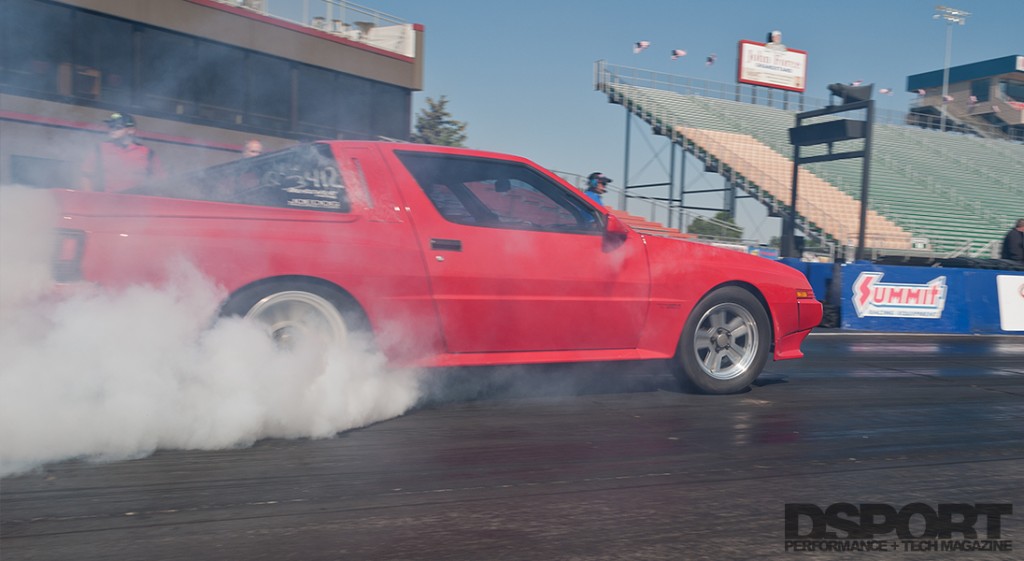
Future Conquests
Gilk awards much of the car’s achievements to Buschur Racing’s custom header and turbo setup and wouldn’t change anything in the build, in spite of the engine bay catching fire at two separate racing events two years in a row. “(That was) the lowest point, when I had a fuel line come loose at the end of my pass and the car caught fire,” Gilk admits. “I thought I was going to watch all of our hard work go up in flames. But, I wouldn’t do anything in the build differently. I’m extremely happy with the outcome so far.” With the full-bodied Conquest able to reach Gilk’s original goals, future plans call for a full racecar back-half conversion and a stronger rear end to handle more power. This should allow Gilk to continue his quest for faster timeslips while flying the original DSM flag high.
